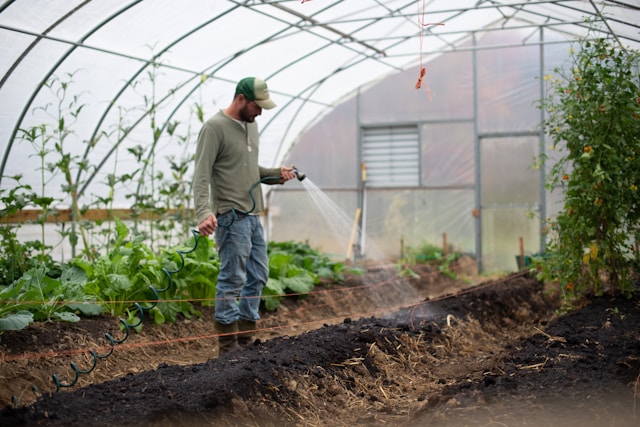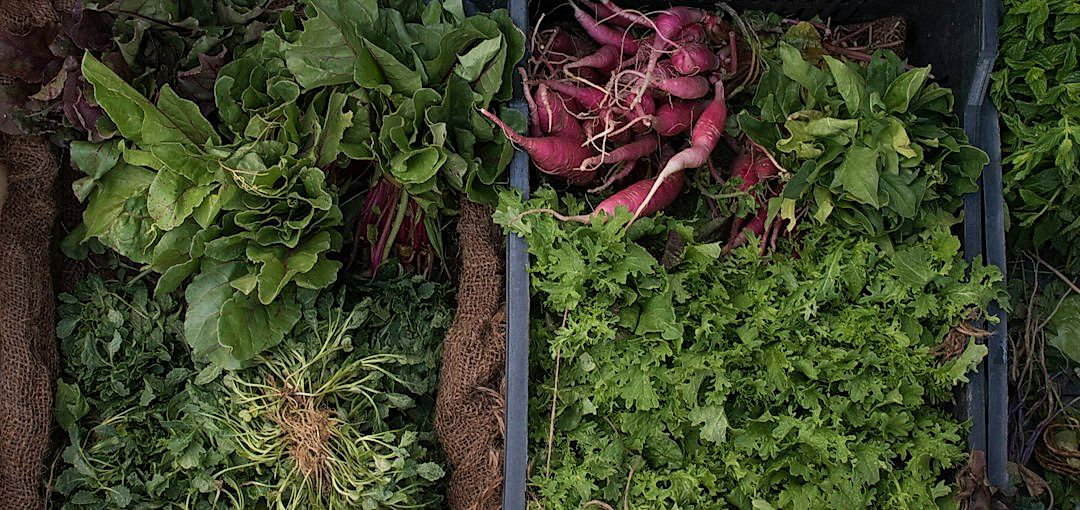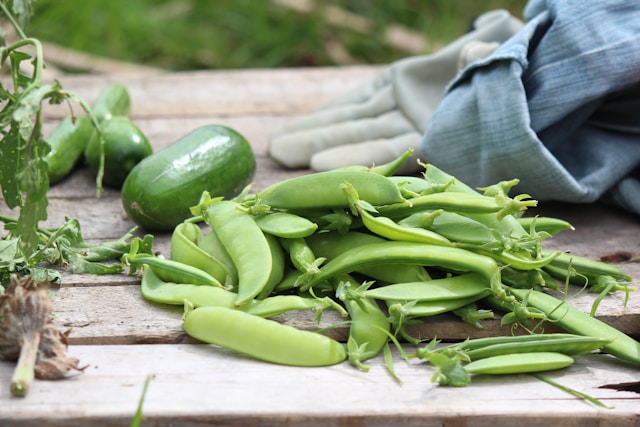As the intricate web of international commerce continues to expand, the agrarian sector experiences transformative shifts.
Phenomena such as the increasingly free movement of goods and the growth in international economic integration considerably shape the workings of produce agriculture.
Exploring these influences can help build a comprehensive understanding of how global trade systems impact food production and distribution.
This in-depth look will reveal how international trade agreements, tariffs, and global market trends function as significant drivers in this critical sector.
Armed with this knowledge, policymakers, farmers, and stakeholders can forge more robust, equitable, and sustainable strategies.
We delve into these complexities and nuances within the context of present-day agricultural practices and innovations, with an aim to inform, educate, and inspire.
Global Trade Influences On Produce Agriculture
1. International Trade Agreements and Tariffs
The impact of international trade agreements and tariffs significantly affects global produce agriculture.
These agreements are often brokered between multiple nations with the intent to facilitate free trade by reducing or completely eliminating tariffs and trade barriers.
When these trade agreements are in place, they can exponentially increase the volume of trade between participating nations, affecting the demand and supply of agricultural produce in the involved countries.
However, the effects of these agreements are not always positive.
Trade agreements can potentially lead to an oversupply of certain items, destabilizing prices and affecting the profitability of farmers in the countries involved.
This is exactly what happened when the North American Free Trade Agreement (NAFTA) was established, leading to a massive influx of cheap corn from the United States and disrupting Mexico’s agriculture industry.
Trade agreements can also create a dependency on imported goods, and if the supply line is disrupted, it can lead to serious food crisis in countries overly reliant on food imports.
Beyond trade agreements, tariffs also play a considerable role in shaping global produce agriculture.
Tariffs are custom taxes that governments levy on imported goods with the aim to protect domestic industries.
They increase the price of imported goods, making local products more competitive in the market.
But if excessively high, tariffs can discourage imports and limit a country’s access to diverse food resources.
In worst case scenarios, tariffs can even trigger trade wars, with countries imposing reciprocal taxes on each other’s products, destabilizing global agricultural trade.
An example of this is the recent United States and China trade war, which disrupted global soybean trade and significantly affected farmers in both countries.
Therefore, it is clear that international trade agreements and tariffs create both opportunities and challenges for the global produce agriculture sector.
Understanding and navigating these dynamics is crucial for individuals, businesses, and governments involved in agriculture and global trade.
Indeed, the way these trade systems are managed affects not only economic stability and development, but also food security and sustainability on a global scale.
2. Global Environmental/Climate Change Policies
Global environmental and climate change policies have a significant impact on produce agriculture worldwide.
International agreements, such as the Paris Agreement, set goals for reducing greenhouse gas emissions, which can alter agricultural practices.
For instance, in efforts to reduce carbon emissions, governments might incentivize farmers to adopt more sustainable farming practices.
This might include switching to organic farming practices that use fewer synthetic fertilizers and pesticides, or adopting no-till farming practices that sequester more carbon in the soil.
This could lead to changes in the varieties of crops that are grown, as well as fluctuations in crop yields.
While some of these changes might lead to reductions in greenhouse gas emissions, they could also affect the profitability of farms.
Climate change policies can alter the dynamics of the agricultural market considerably, resulting to shifts in the global supply and demand patterns.
The implementation of these policies might cause a shift in food production locations globally, as different regions become more or less suitable for certain types of agriculture.
It’s also possible that these changes could lead to increased food prices, especially if crop yields decrease or if the cost of implementing more sustainable farming practices is passed on to consumers.
On the other hand, these policies could stimulate innovation in agricultural technology, leading to the development of more efficient and sustainable farming methods that could ultimately increase crop yields and food production.
There is also a link between climate change policies and international trade.
Climate tariffs, for instance, could potentially affect the competitiveness of certain agricultural products in the global market.
Agricultural sectors which have high greenhouse gas emissions, such as the livestock industry, may be particularly affected by such policies.
In the long run, these policies could lead to structural changes in global agricultural markets.
Regardless of immediate impacts, those climate change policies are important in sustaining agricultural productivity and food security in the face of a changing climate.
Ultimately, the success of these policies in achieving their environmental goals and their effects on global trade and agriculture will depend on the particulars of their implementation and enforcement.
3. Exchange Rates Fluctuations
The influence of exchange rates fluctuations on global trade, particularly in produce agriculture, cannot be understated.
In a globalized economy, the value of a nation’s currency relative to another can have a significant impact on the trade of agricultural products.
For instance, when a country’s currency appreciates, the prices of its exports become more expensive in the international market.
As a result, it might lead to a decline in demand for their agricultural products internationally, thereby affecting the country’s global trade balance.
Conversely, a depreciated currency can make a country’s agricultural exports less expensive, potentially increasing international demand and promoting a trade surplus.
The prevalence of exchange rates fluctuations, however, brings about uncertainty and risk in international trade.
Agricultural traders, for instance, have to deal with the risk of exchange rates fluctuating between the time of a transaction’s initiation and its completion.
This could potentially lead to financial losses or gains, depending on the direction of the currency’s fluctuation.
The unpredictability of exchange rates can also affect planning and decision-making processes within the agricultural sector.
For example, uncertainty about future exchange rates can make it difficult for exporters and importers to set accurate prices for their goods.
This is why many international traders use hedging strategies, such as futures contracts, to manage exchange rate risk.
Farmers, exporters and importers in the agricultural sector may face potential losses or gains due to unpredictable changes in exchange rates.
It’s critical to note that exchange rates also influence the cost of inputs for agricultural production like machinery, seeds, and fertilizers, most of which are often imported.
In essence, fluctuations in exchange rates can result in changes in production costs, which can, in turn, affect competitiveness in the global market.
The impact of exchange rate fluctuations, therefore, extends beyond just the prices of agricultural exports and imports and can ultimately influence the broader dynamics of global trade in produce agriculture.
4. Global supply and demand dynamics
Global supply and demand dynamics fundamentally shape the landscape of produce agriculture, affecting everything from pricing to production patterns.
The forces of supply and demand are influenced by a myriad of factors on a global scale, ranging from weather conditions in key growth regions to changes in dietary preferences in different markets.
As an example, an increase in demand for avocados in markets like the United States or Europe may lead to an increase in the production of avocados in countries like Mexico or Chile.
For a more multilayered instance, let’s consider global grain supplies: The rise of biofuels has impacted the demand for, and consequently the price of, corn, while unpredictable weather conditions affecting wheat crops in Russia can cause prices to fluctuate worldwide.
Disruptions in supply, due to events such as political instability or climatic disasters, can drastically affect global costs and availability of produce. At the same time, sudden shifts in consumer demand can foster rapid overproduction or underproduction, creating a ripple effect in global agricultural markets.
In the case of a disruption in supply, such as a draught or a disease outbreak that negatively affects crop yields, prices of the affected produce could potentially skyrocket.
This not only impacts the economy in the country where the disruption occurred but can have ripple effects in markets around the world, highlighting the interconnected dynamics of global produce supply and demand.
Conversely, an oversupply of produce due to favourable growing conditions or advancements in agricultural technology can result in significant price drops.
This could lead to financial hardships for farmers who depend on certain price levels for their produce to sustain their businesses and livelihoods.
Similarly, shifts in consumer tastes and preferences, such as a move towards plant-based diets, can have profound impacts on the global supply and demand dynamics by increasing demand for certain crops.
The upswing in global demand may subsequently fuel agricultural shifts in producing regions and spur technological developments aimed at increasing yield.
Moreover, other external factors like trade agreements and tariffs can also influence these dynamics, affecting the cost of imported produce and consequently its demand.
Overall, the global nature of supply and demand dynamics in agriculture is a reflection of our interconnected world, which requires a balance between production and consumption needs.
Understanding these dynamics is crucial for farmers, traders, policymakers, and stakeholders at all levels of the global food system, from field to fork.
As we continue to navigate the complexities of global trade influences on produce agriculture, these dynamics will remain a central theme, influencing business models, policy decisions, and technological developments aimed at making our food systems more resilient and sustainable.
5. Technological Advances in Agriculture
The role and impact of technological advances in agriculture on global trade cannot be overstated.
Modern technological innovations have revolutionized the agricultural sector significantly, leading to increased productivity and economic growth.
Technology, such as precision farming and automation, has helped farmers to produce more with less input, thus enhancing efficiency and output.
Biotechnology, for example, has led to the development of genetically improved crops, which are resistant to pests and diseases, and have a higher yield.
Technological improvements in irrigation systems and farming machinery have also made a significant impact, not only on increasing productivity but also on reducing water usage and manual labor.
Drones and satellite technology are being used to monitor crop conditions and soil quality, enabling farmers to make data-driven decisions and enhancing their ability to face uncertainties such as weather changes.
With the advent of blockchain technology, transparency and traceability in the agricultural supply chain are significantly enhanced, fostering trust and confidence among global trade partners.
Moreover, data analytics and artificial intelligence are providing farmers with accurate crop forecasts and other useful insights, which can help them take informed decisions and mitigate risks.
All these technologies are contributing to making farming more sustainable and less dependent on non-renewable resources, thus addressing some of the challenges posed by climate change and increasing global food demand.
However, despite these benefits, the adoption of technology in agriculture is not uniform globally.
High upfront costs, lack of knowledge and skills, as well as poor infrastructure, particularly in developing countries, are among the key challenges hindering the widespread adoption of these technologies.
Furthermore, regulatory, legal, and ethical issues related to genetically modified crops and data privacy are also potential roadblocks to the global diffusion of agricultural technology.
Despite these challenges, the global trend towards increased investment in agri-tech suggests that more farmers are realizing the benefits of these technologies and are willing to invest in them.
As technological advances in agriculture continue to proliferate, there is a great potential for them to create a more productive, sustainable, and resilient global food system.
Thus, it is clear that technological progress in agriculture will play an integral role in determining the future dynamics of global trade in agricultural produce.
6. Globalized labor market impacts
Global trade affects various aspects of life, one of the most overlooked but crucial being the globalized labor market.
With globalization, boundaries have blurred, and labor markets have essentially become international.
The globalized labor market has had its own set of impacts on produce agriculture, playing a key role in shaping the industry.
In many ways, globalization has expanded opportunities for workers in produce agriculture.
For example, workers can now move to foreign countries where agriculture is more prosperous, or where the pay is higher.
This migration of labor is not restricted to countries on a macro level, but also occurs within national borders where certain regions might be more fertile or lucrative for agricultural practices.
Such migration can lead to greater competition and could potentially result in better working conditions and pay due to increased demand for labor.
However, not all aspects of globalized labor markets are positive for workers in the produce agriculture industry.
Sometimes, the influx of foreign workers can lead to a surplus and might depress wages.
Moreover, the benefits of globalization are not always fairly distributed, and often it is the unskilled or low-skilled workers who are marginalized.
They are often vulnerable to exploitation due to a lack of understanding of their rights, inability to speak the local language, or because they are working illegally.
Global trade can also lead to a high demand for certain types of crops, leading to a trend of monoculture farming.
This could result in workers having to focus on one type of produce, losing skills and experience with other types of farming.
The impacts of a globalized labor market on produce agriculture are incredibly complex and multi-faceted.
It is a sector that has been reshaped by globalization, with changes in where and how people work, what crops they grow, and how much they earn for their labor.
All of this intertwines with rights, migration, climate change, governmental policies, and economic conditions to determine the experiences of workers in the global produce agriculture industry.
7. International Competition and Market Saturation
International competition is a critical driver of global trade impacting the growth and sustainability of produce agriculture.
Markets today are increasingly global, allowing farmers and agricultural businesses unprecedented access to diverse customer bases across the world.
A key byproduct of this globalization of produce agriculture is the heightened level of competition that local and national farmers face from international counterparts.
Such heightened competition, although beneficial in promoting high quality products, can lead to a scenario where markets are saturated, with minimal room for new entrants.
>The saturation of markets, particularly within the produce agriculture sector, may create challenges for less competitive farmers and enhance the risk of income instability.
Given the perishable nature of most agricultural products, farmers competing in these saturated markets must focus not just on the production quantity but equally on post-harvest handling, processing, and marketing to maintain competitiveness.
An overflow of commodities in the market can lead to a price slump, where the excess supply pushes the cost below the production value, hurting farmers and businesses alike.
Aside from the economic ramifications, market saturation and excess competition can also lead to a rapid depletion of resources, contributing to global environmental challenges.
This often necessitates the export of produce to other markets, a dynamic that can be influenced by various factors like trade agreements, tariffs, and exchange rates.
Policy interventions at both national and international levels are, therefore, critical in regulating the competition and preventing market saturation from reaching unsustainable levels.
The ability of farmers and agricultural businesses to adapt to changing consumer demands, innovate, and invest in technology can also serve as an effective buffer against the impacts of market saturation.
It is this intrinsic connection between international competition, market saturation, and sustainability that exemplifies the influence of global trade on produce agriculture.
Therein lies the importance of a robust understanding of global trade dynamics in shaping the future of produce agriculture.
Emphasizing capacity building, fostering innovation, and promoting sustainability become key to ensuring that international competition and market saturation, two unavoidable consequences of global trade, do not undermine the viability of produce agriculture in the long-term.
At the end of the day, while market saturation and increased competition may reinforce efficiency and quality, maintaining the delicate interplay with sustainability remains a critical challenge for global trade in produce agriculture.
The Bottom Line
Throughout the discussion of international trade agreements and tariffs, global environmental/climate change policies, the fluctuations in exchange rates, global supply, and demand dynamics, technological advances in agriculture, impacts of a globalized labor market, and international competition with market saturation, the interconnectedness of these factors become increasingly clear.
Ultimately, all these elements play pivotal roles in shaping the trajectory of the global economy.
Furthermore, the influence of policy decisions, technological progress, and market dynamics have far-reaching implications not just on a macroeconomic level but also intimately affect the livelihoods and prosperity of individuals and societies worldwide.
As the economy continues to globalize, finding balance, fostering robust competition, adopting sustainable practices, and encouraging innovation are among the keys to promoting economic stability and growth.




